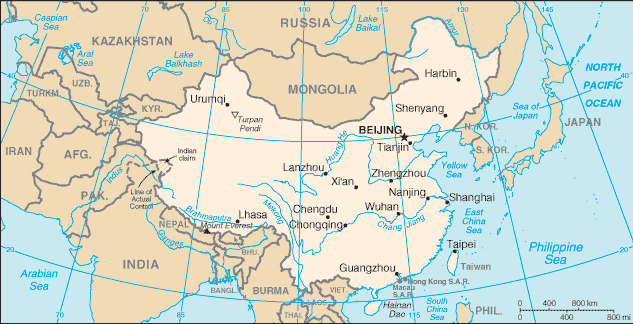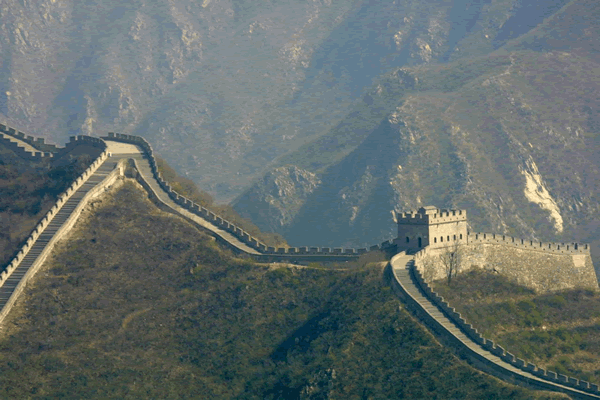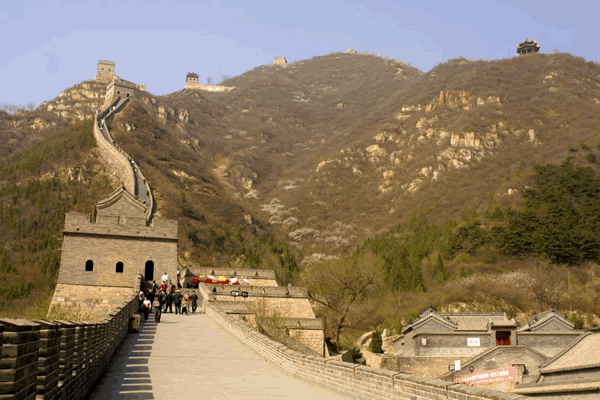 |
 |
THE GREAT WALL - CHINA
 |
 |
| Location: | Geographic coordinates: | Area: | Area - comparative: |
| Eastern Asia, bordering the East China Sea, Korea Bay, Yellow Sea, and South China Sea, between North Korea and Vietnam. | 35 00 N, 105 00 E | total: 9,596,960 sq km | Slightly smaller than the US |
| Population: | Languages: | Capital: | Currency: |
| 1,298,847,624 | Standard Chinese or Mandarin (Putonghua, based on the Beijing dialect), Yue (Cantonese), Wu (Shanghaiese), Minbei (Fuzhou), Minnan (Hokkien-Taiwanese), Xiang, Gan, Hakka dialects, minority languages (see Ethnic groups entry) | Beijing | yuan (CNY) |



| Types of rocks: |
Granite (Igneous rock), marble (Metamorphic rock), limestone (Sedimentary rock), and shale (Sedimentary rock) was crushed to make bricks. |
To the northwest and north of Beijing, a huge, serrated wall zigzags it's way to the east and west along the undulating mountains. This is the Great Wall, which is said to be visible from the moon.
Construction of the Great Wall started in the 7th century B.C. The vassal states under the Zhou Dynasty in the northern parts of the country each built their own walls for defence purposes. After the state of Qin unified China in 221 B.C., it joined the walls to hold off the invaders from the Xiongnu tribes in the north and extended them to more than 10,000 li or 5,000 kilometers. This is the origin of the name Of the "10,000-li Great Wall". The Great Wall was renovated from time to time after the Qin Dynasty. A major renovation started with the founding of the Ming Dynasty in 1368, and took 200 years to complete. The wall we see today is almost exactly the result of this effort.
With a total length of over 6,000 kilometers, it extends to the jiayu Pass in Gansu Province in the west and to the mouth of the Yalu River in Liaoning Province in the east. What lies north of Beijing is but a small section of it.
© Guillermo Rocha, P. G. / Brooklyn College Geology Department